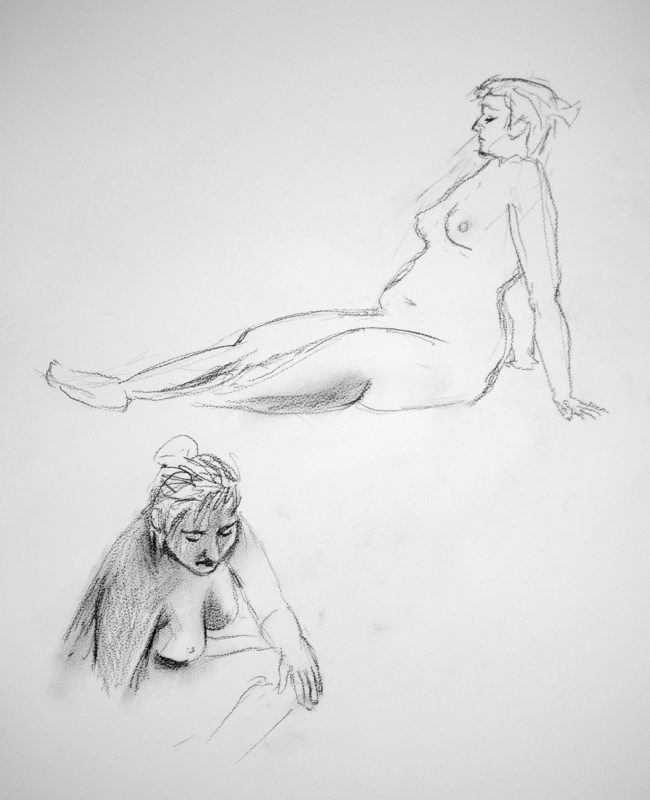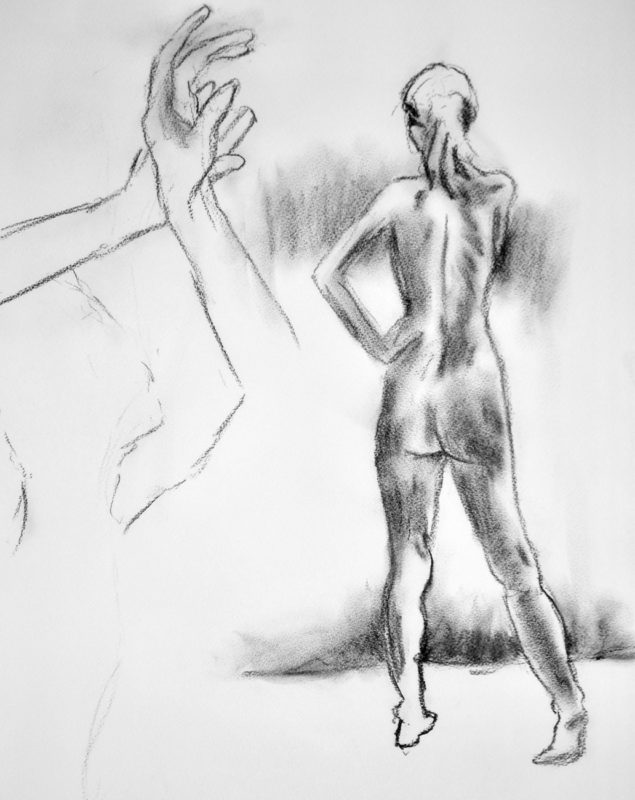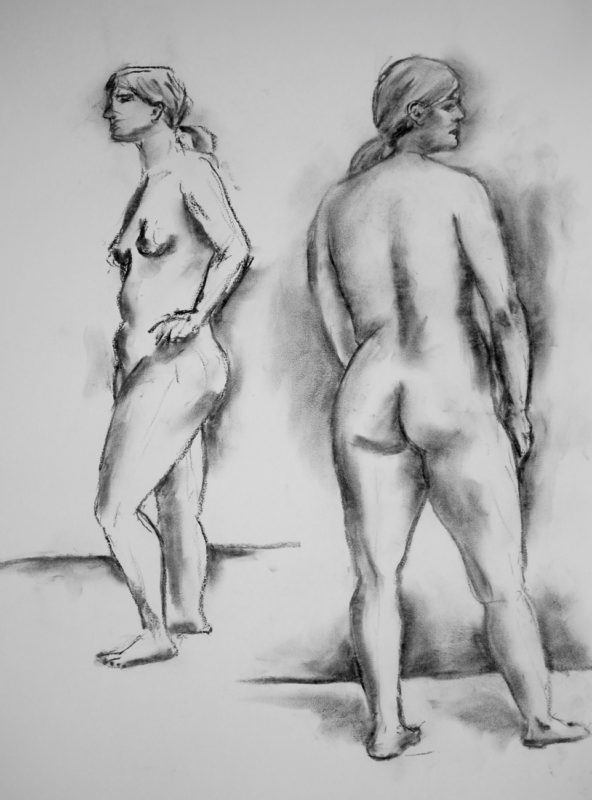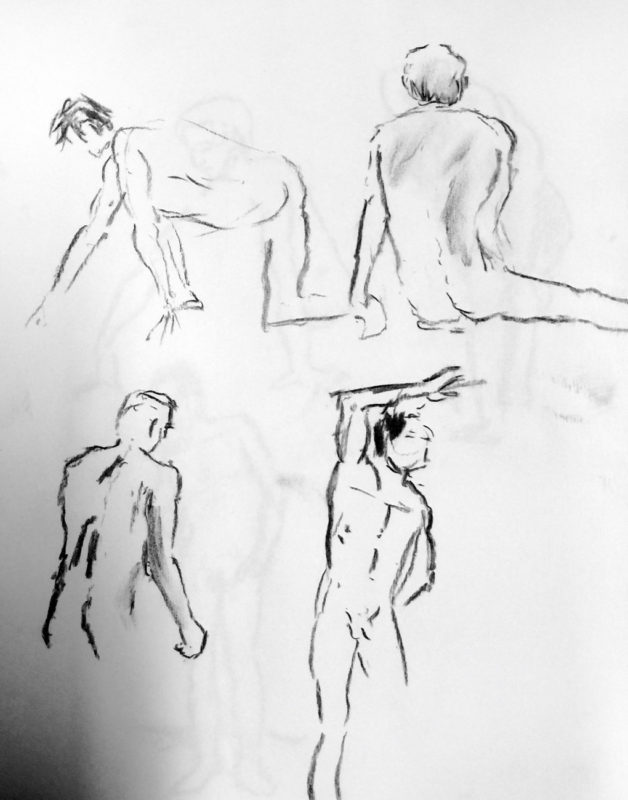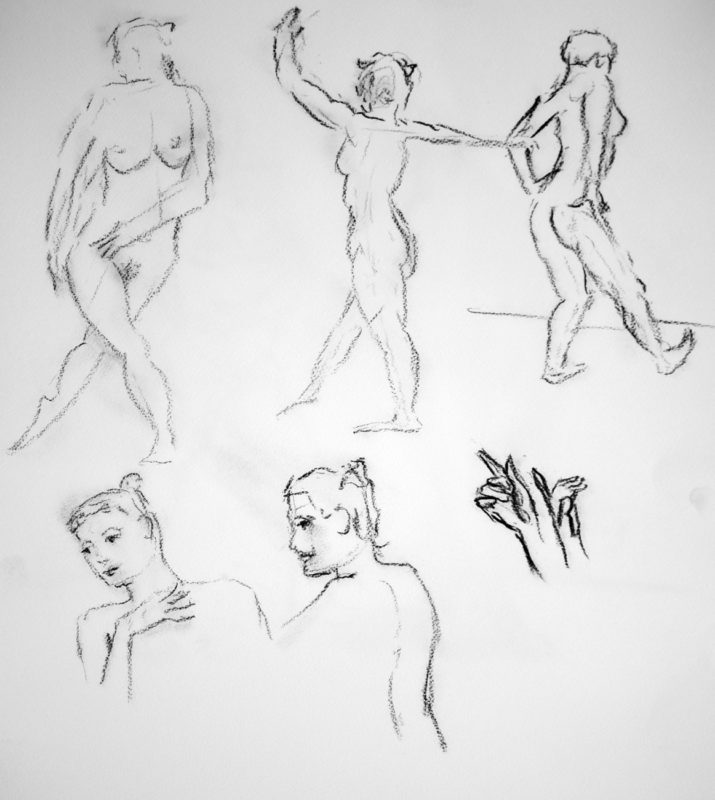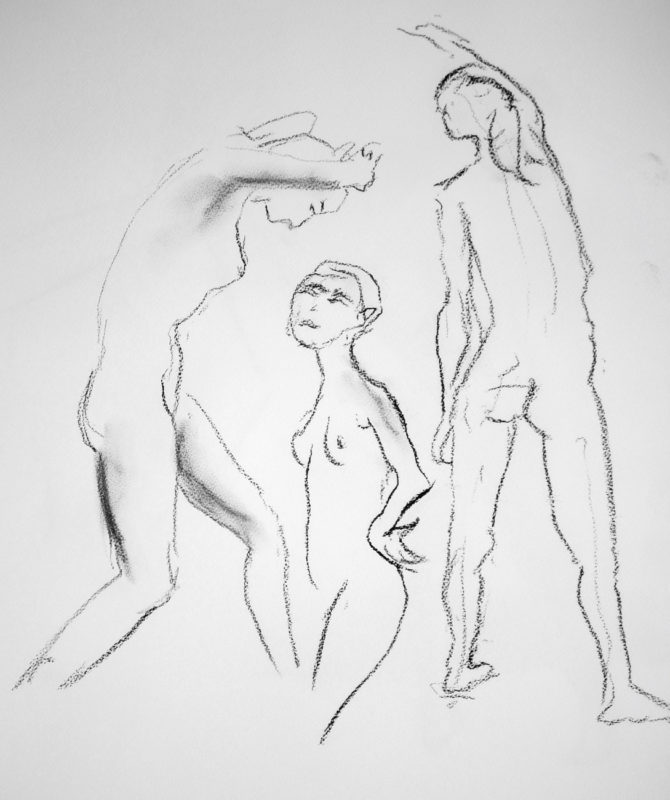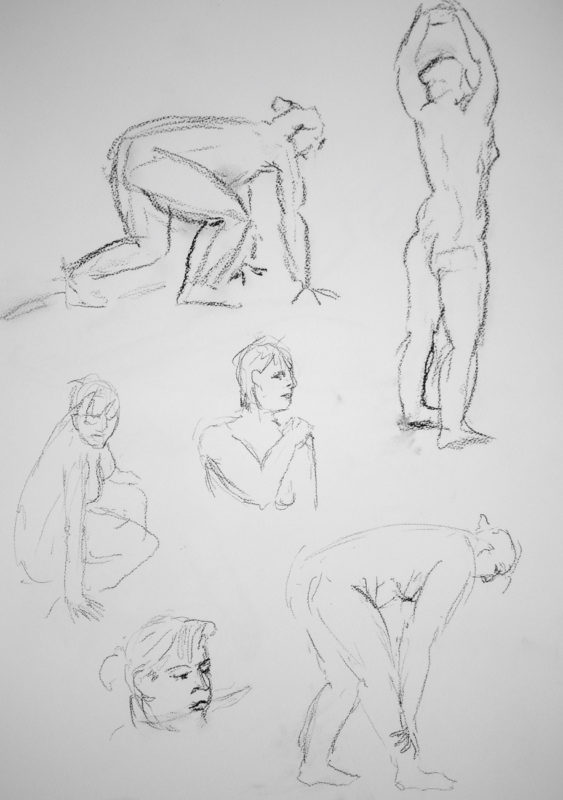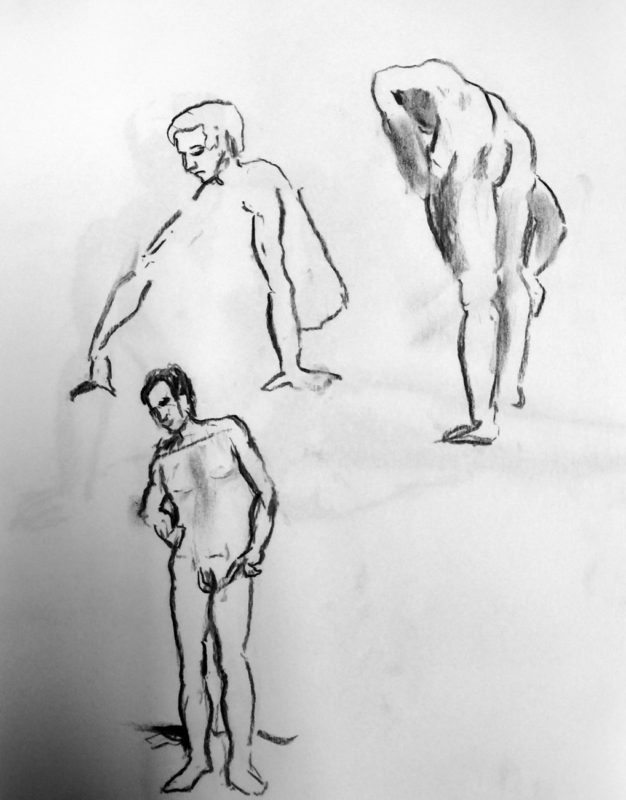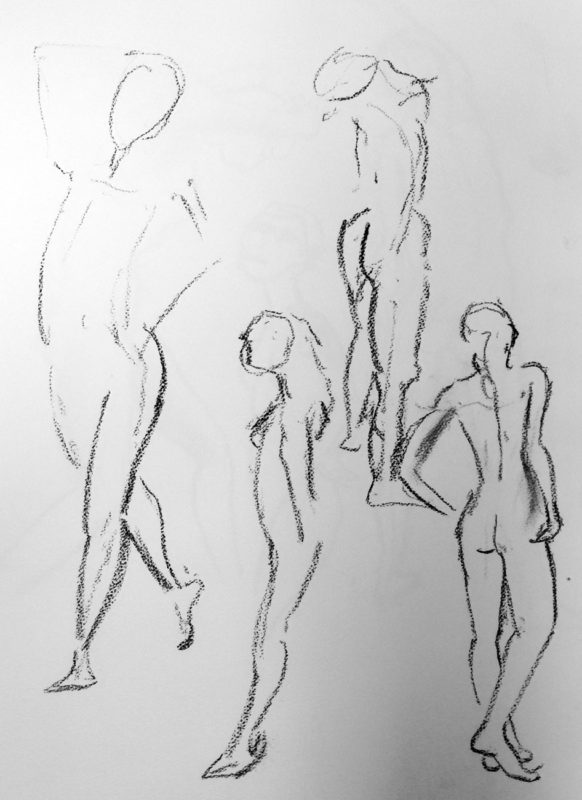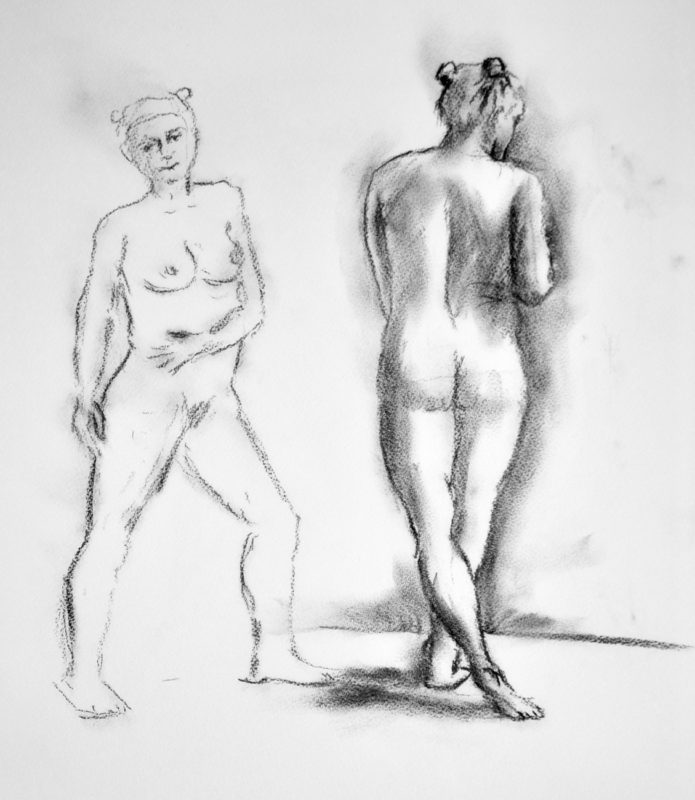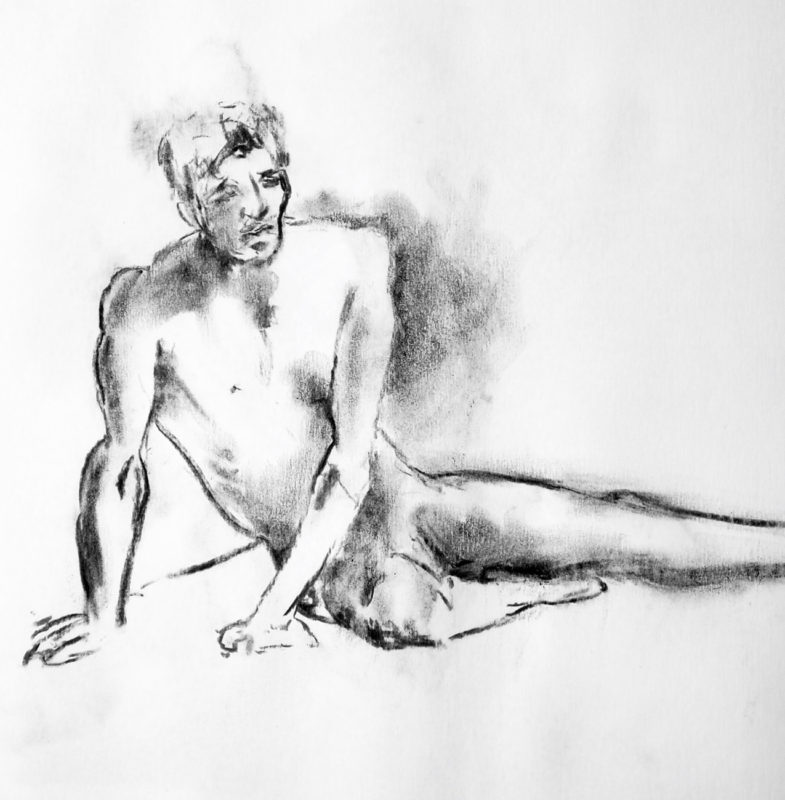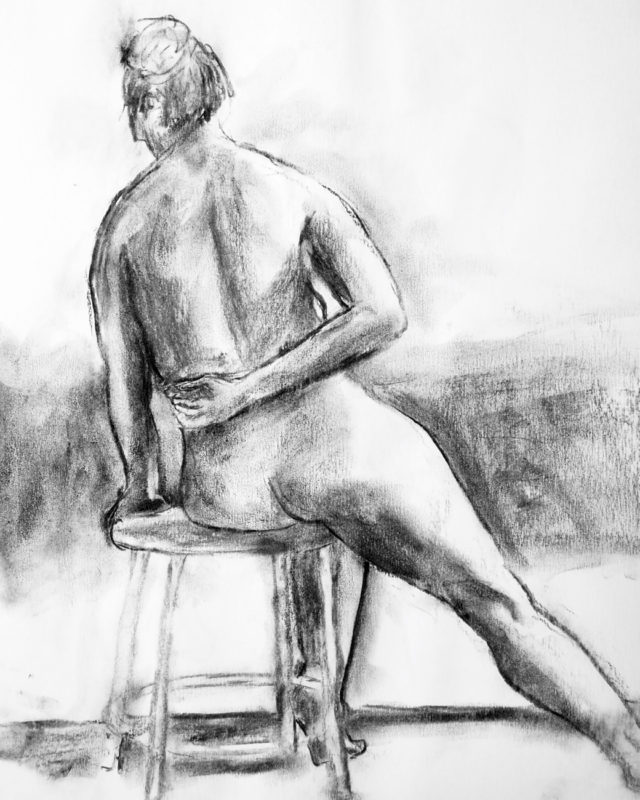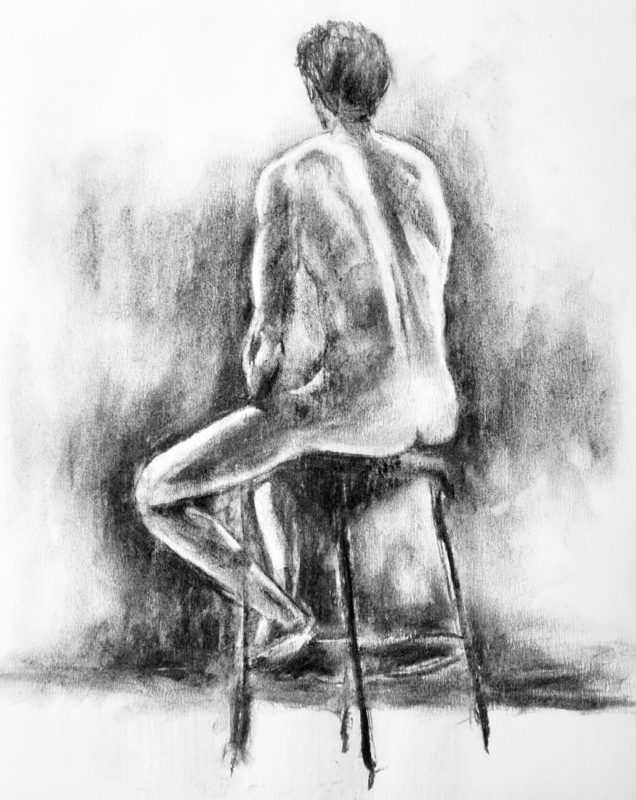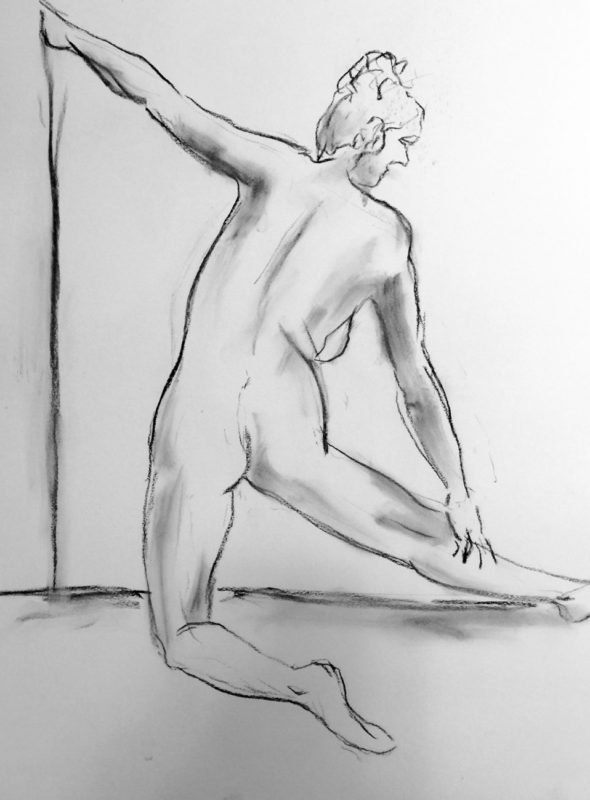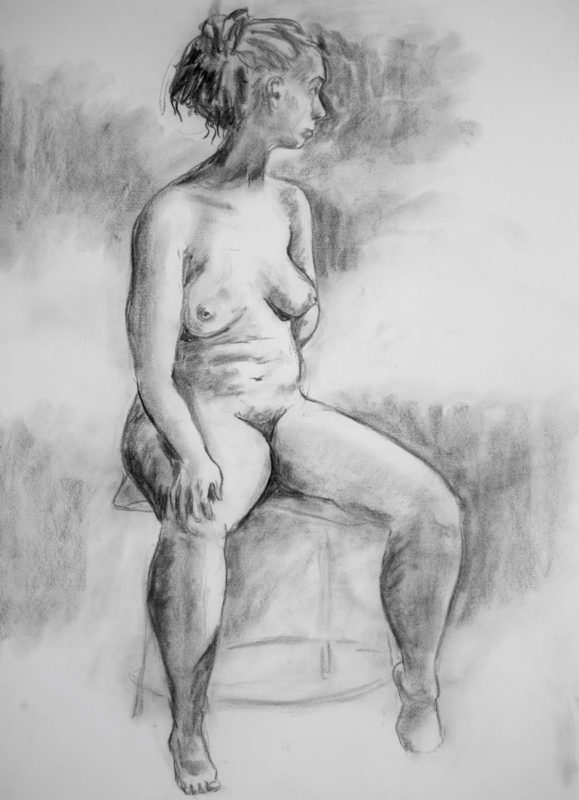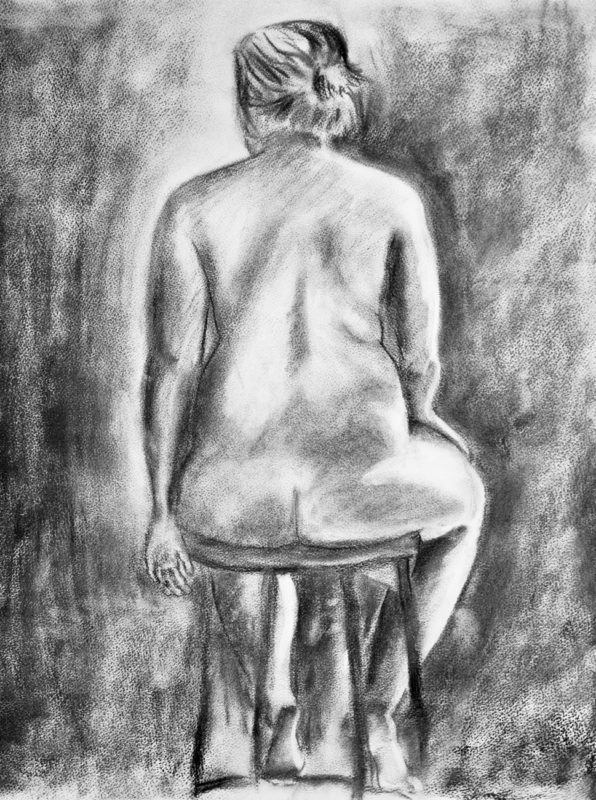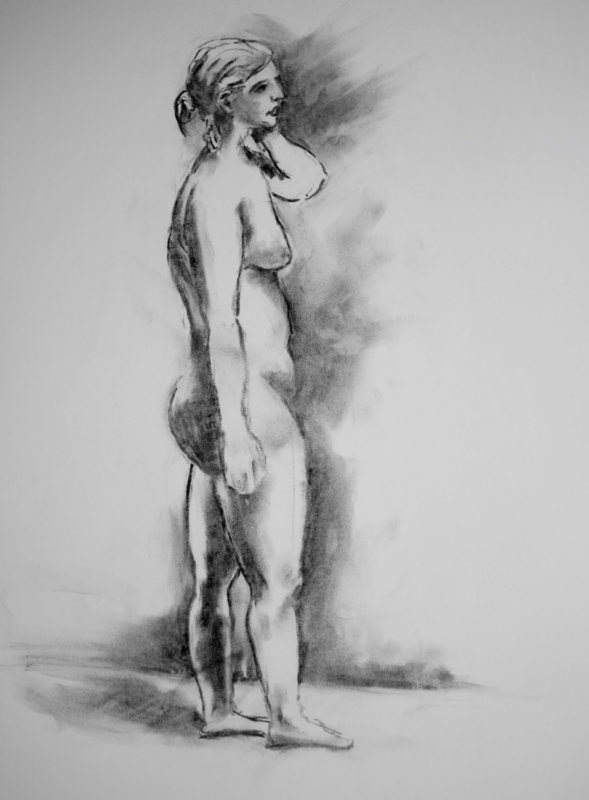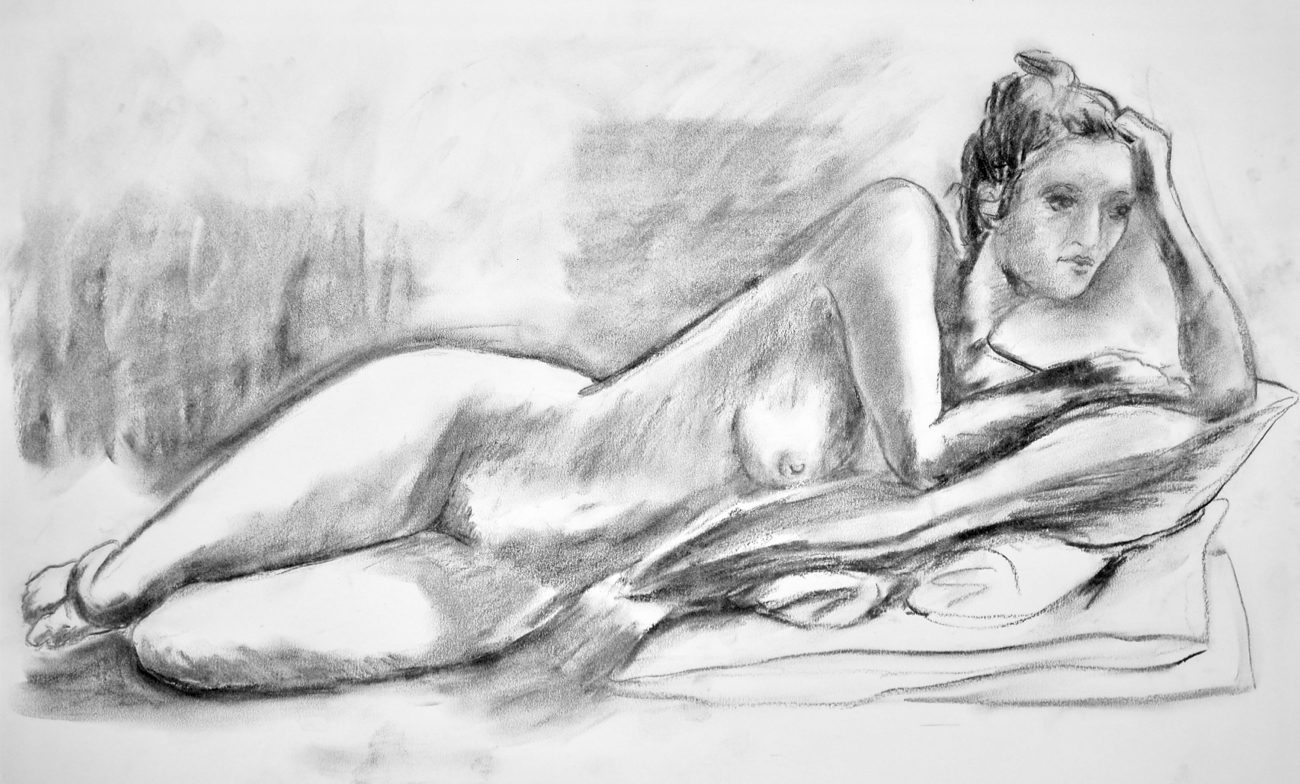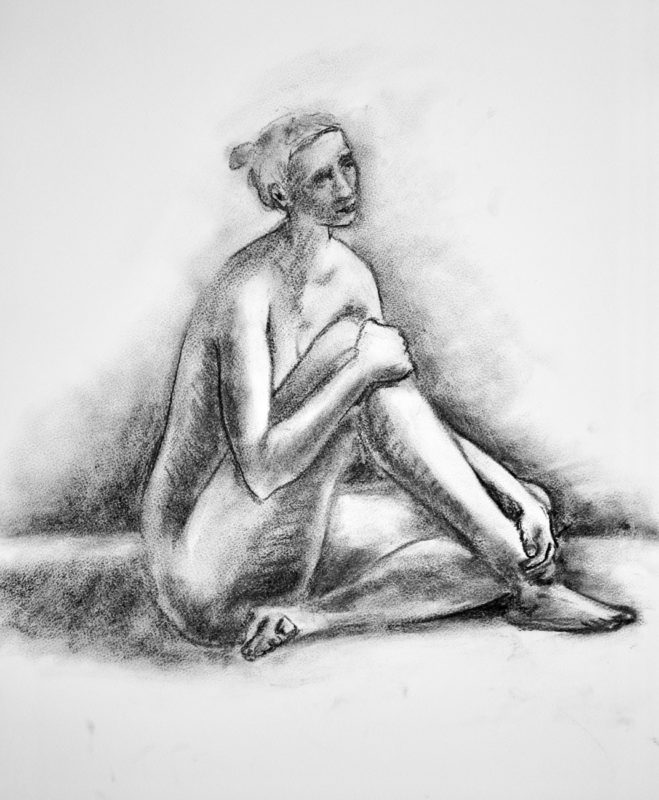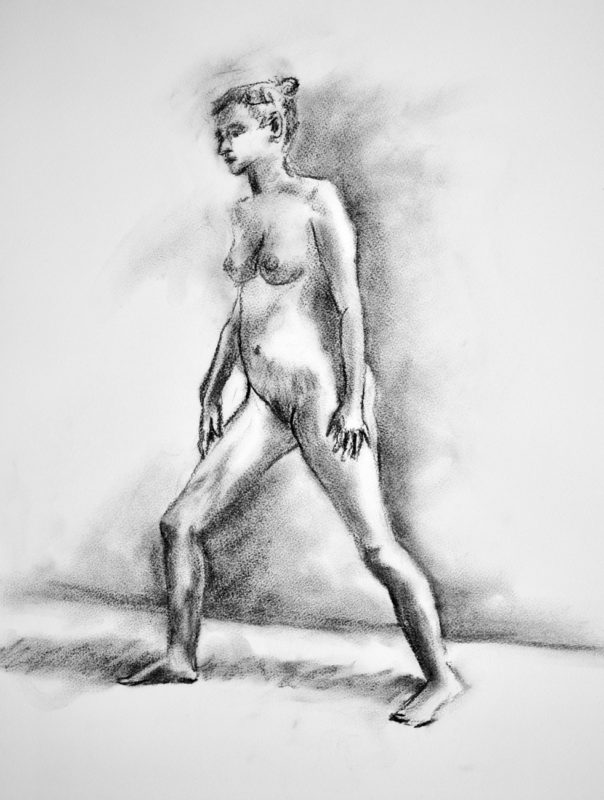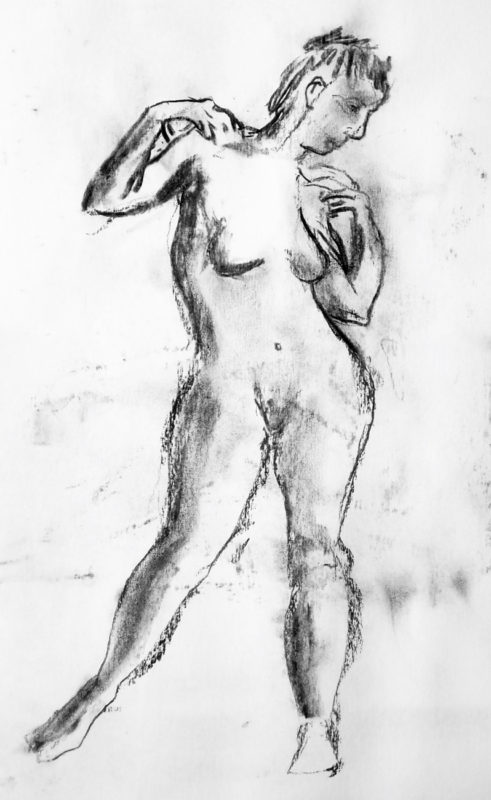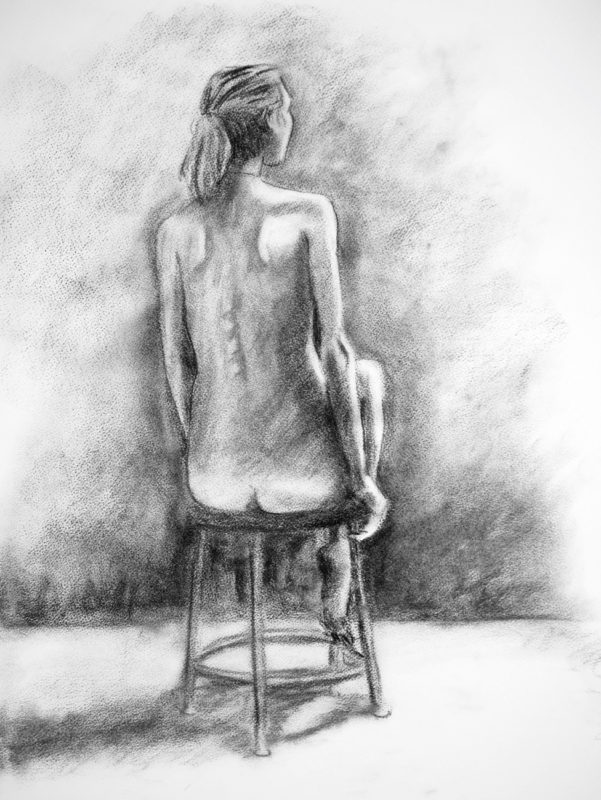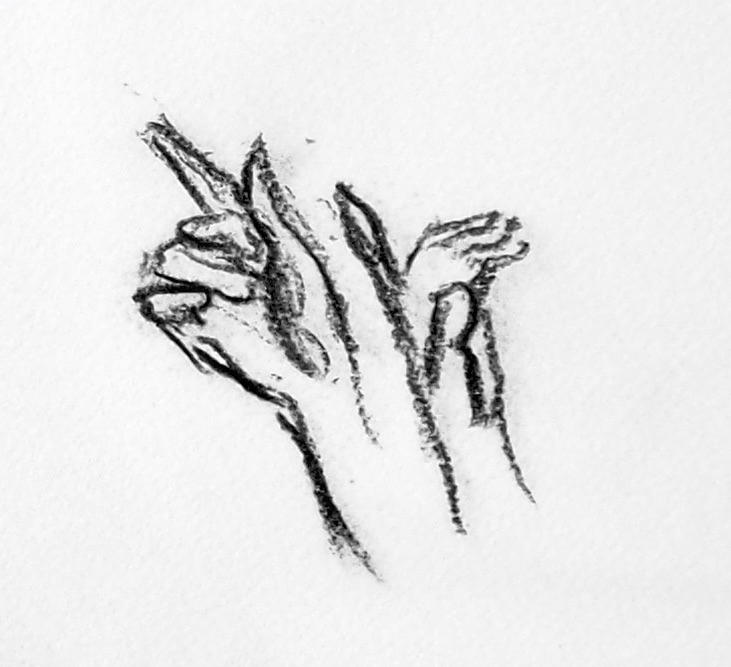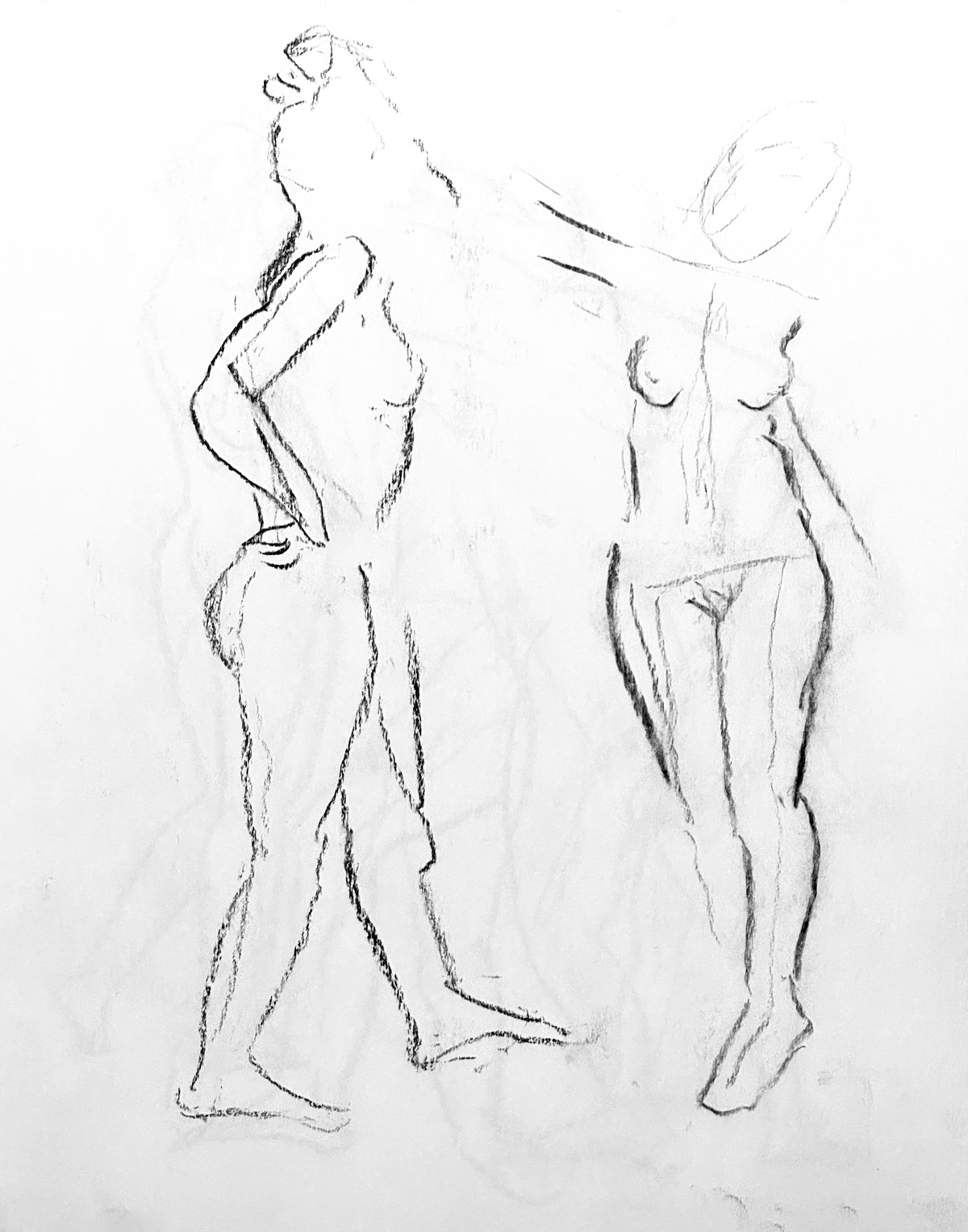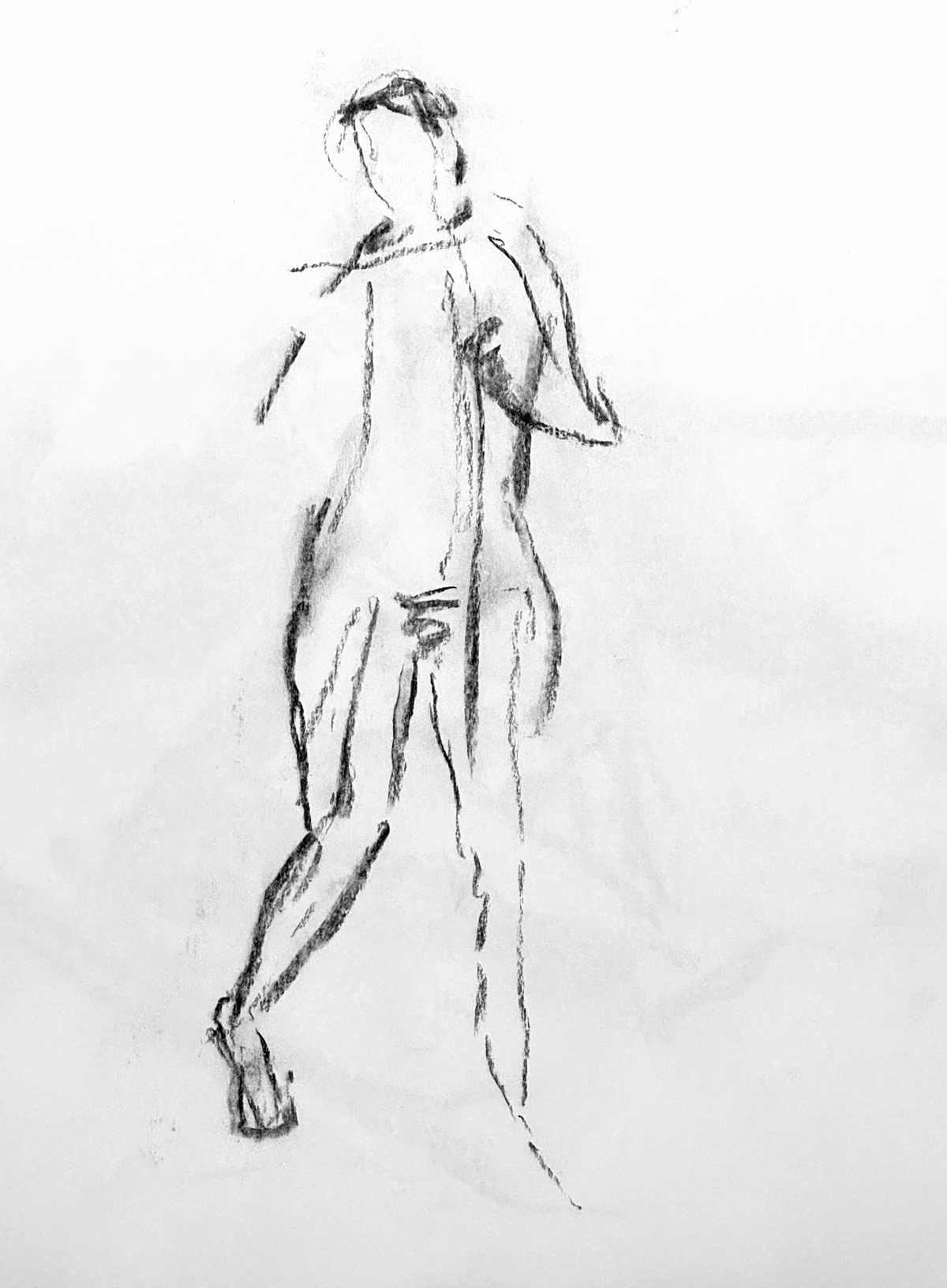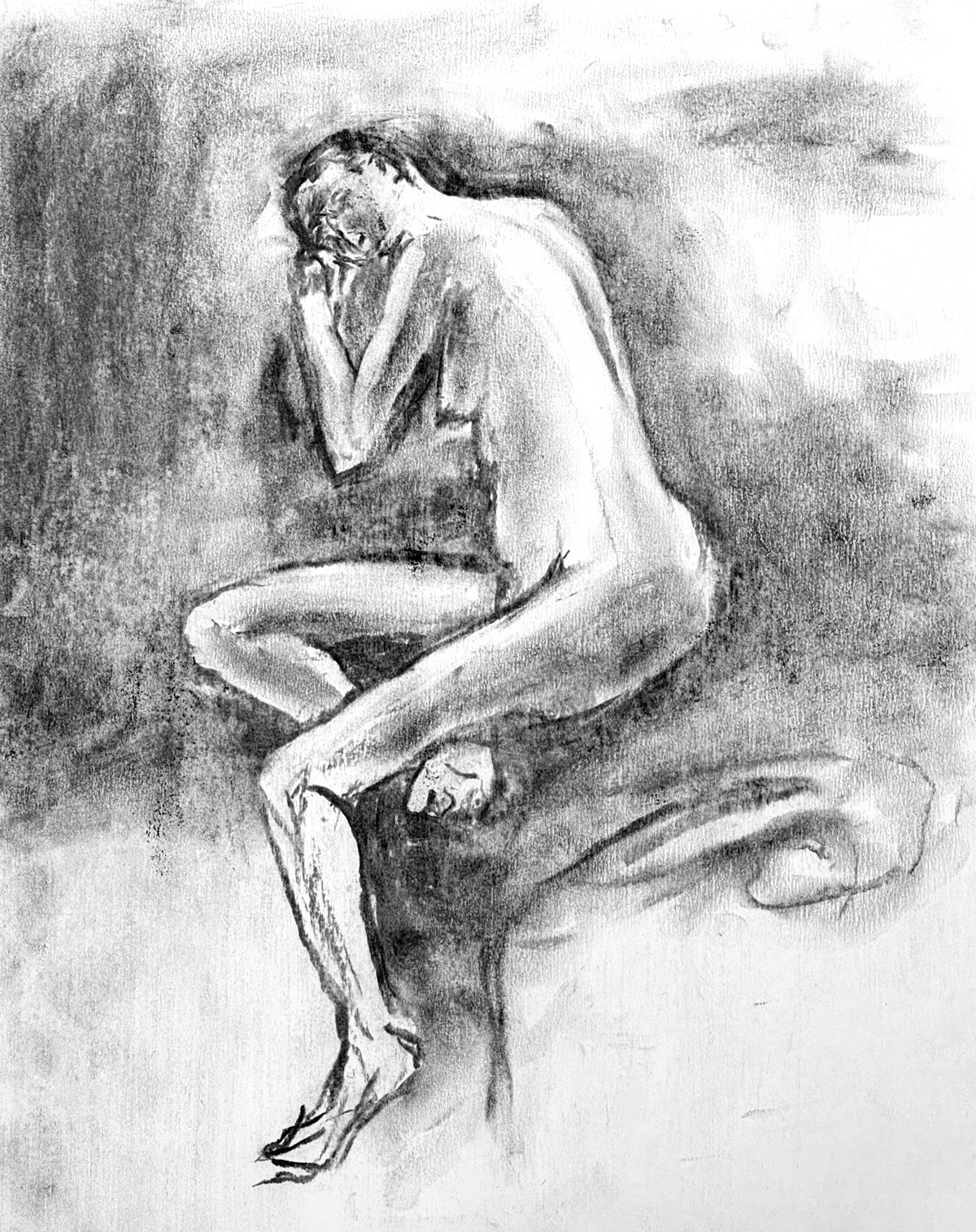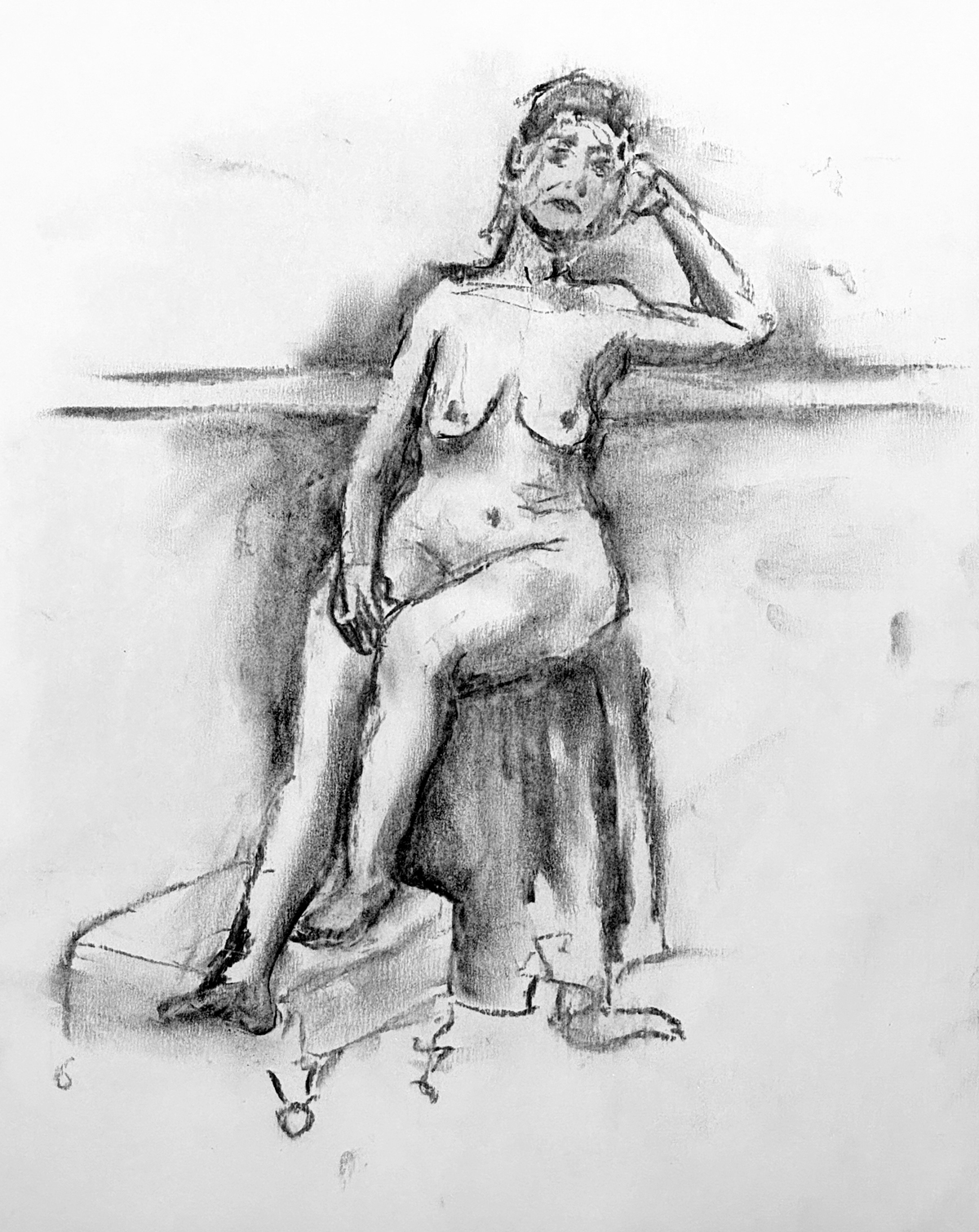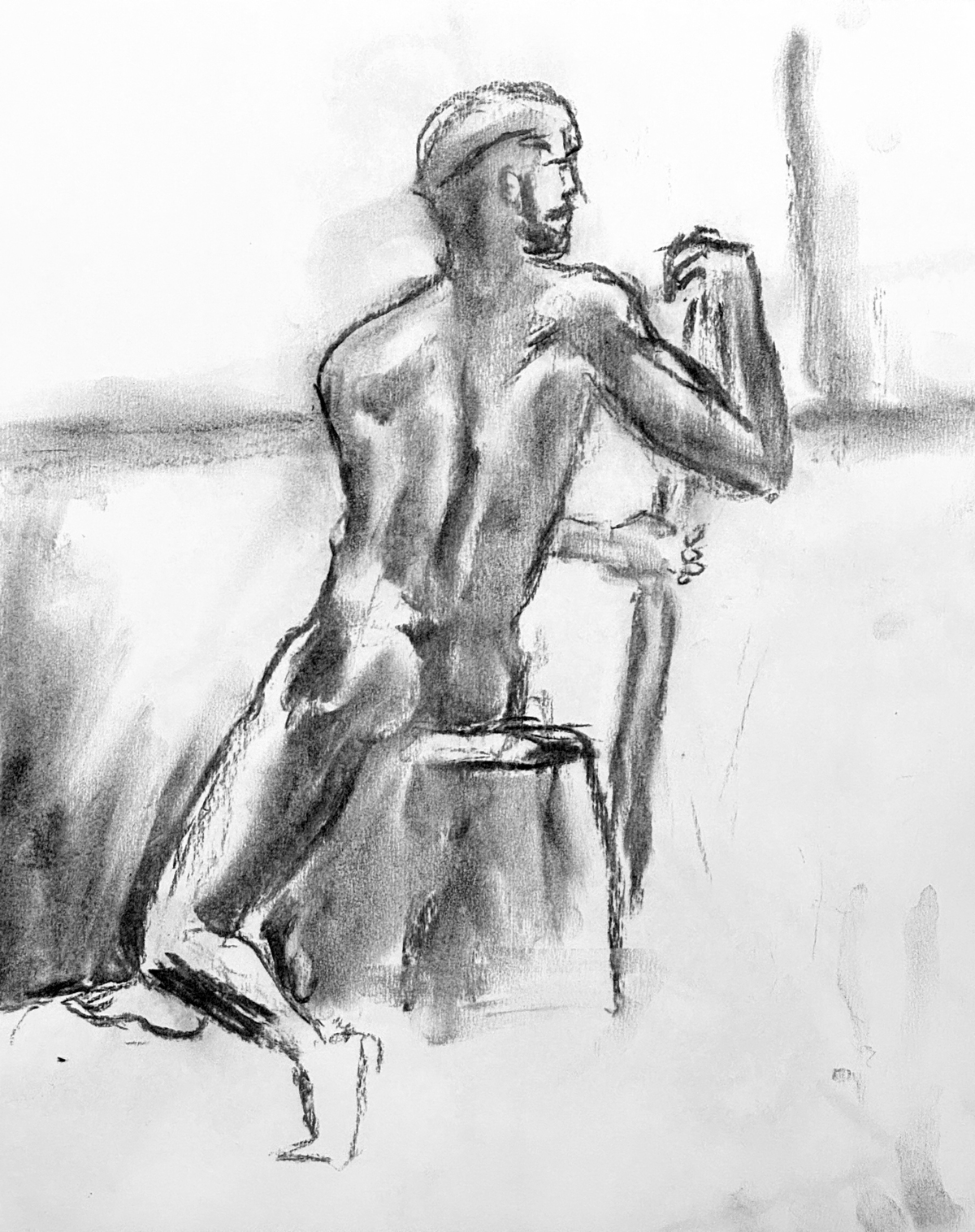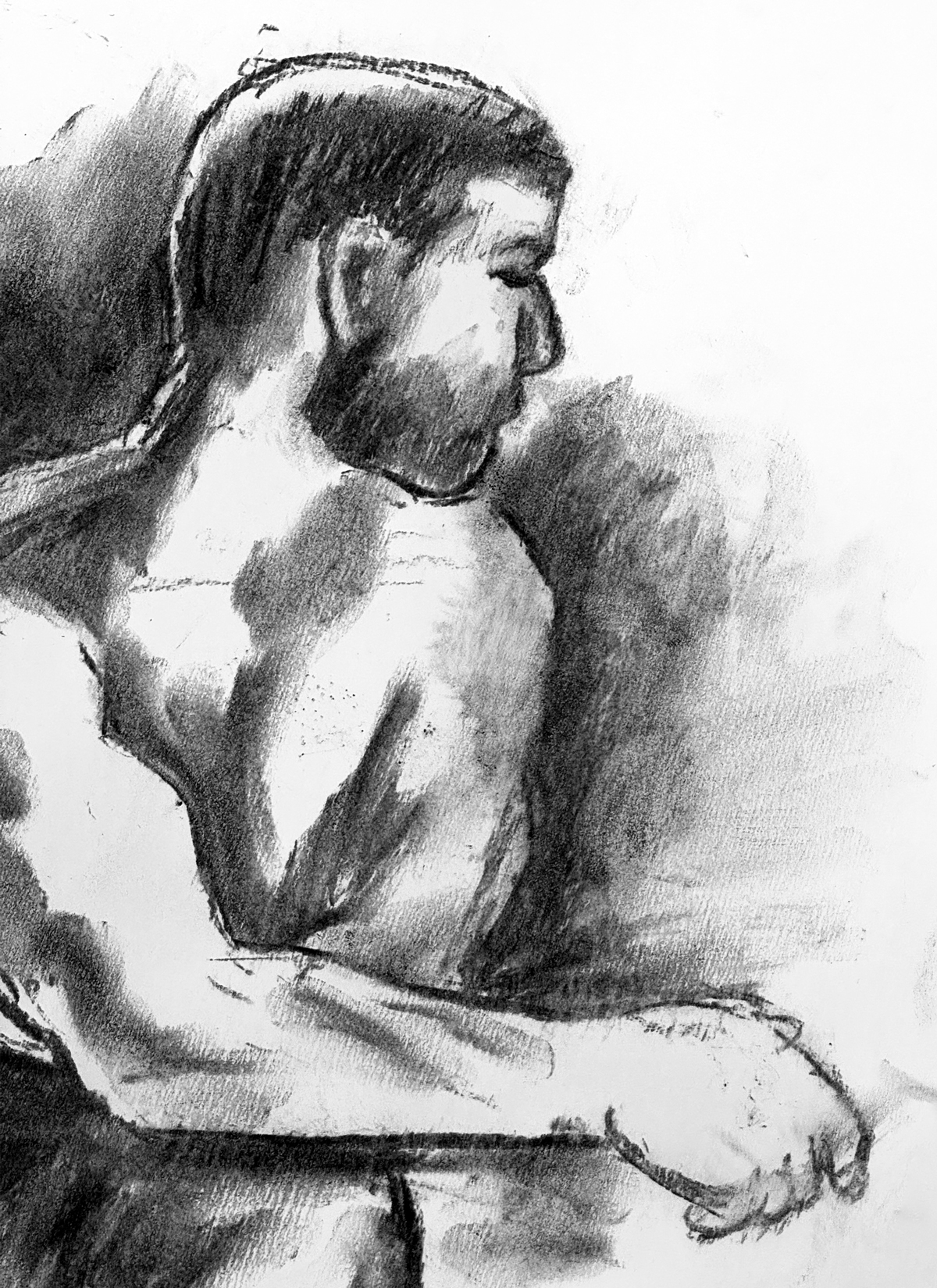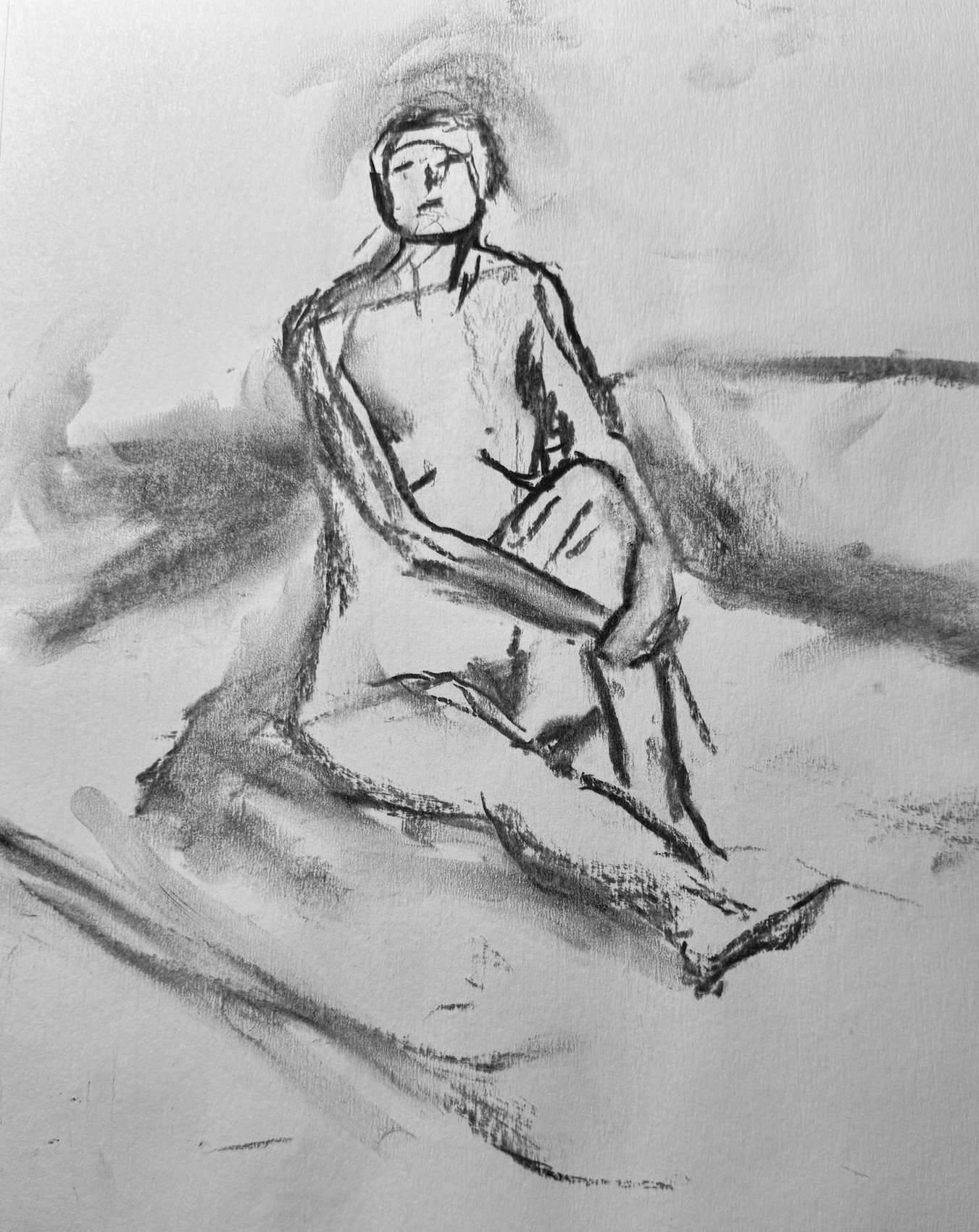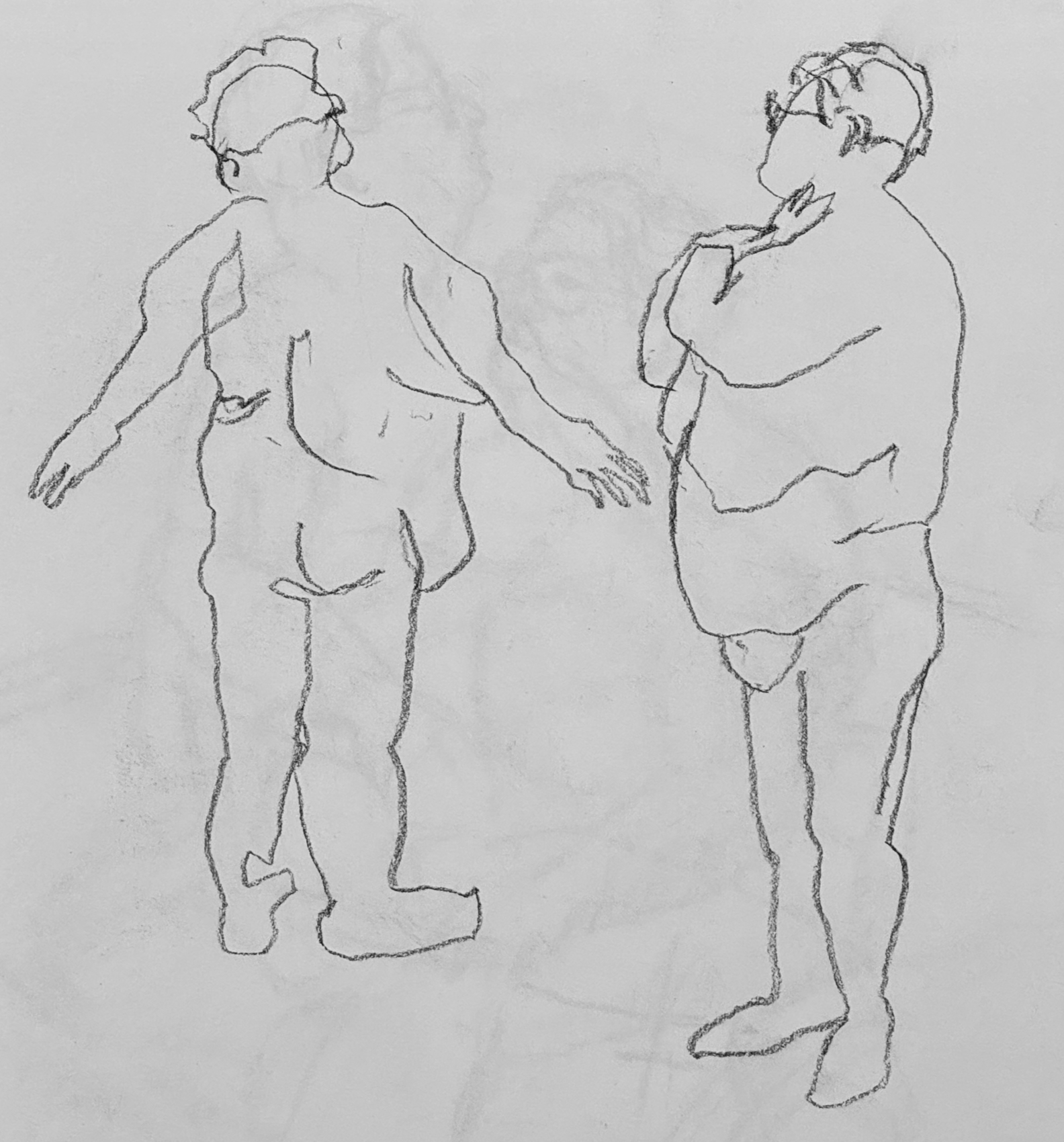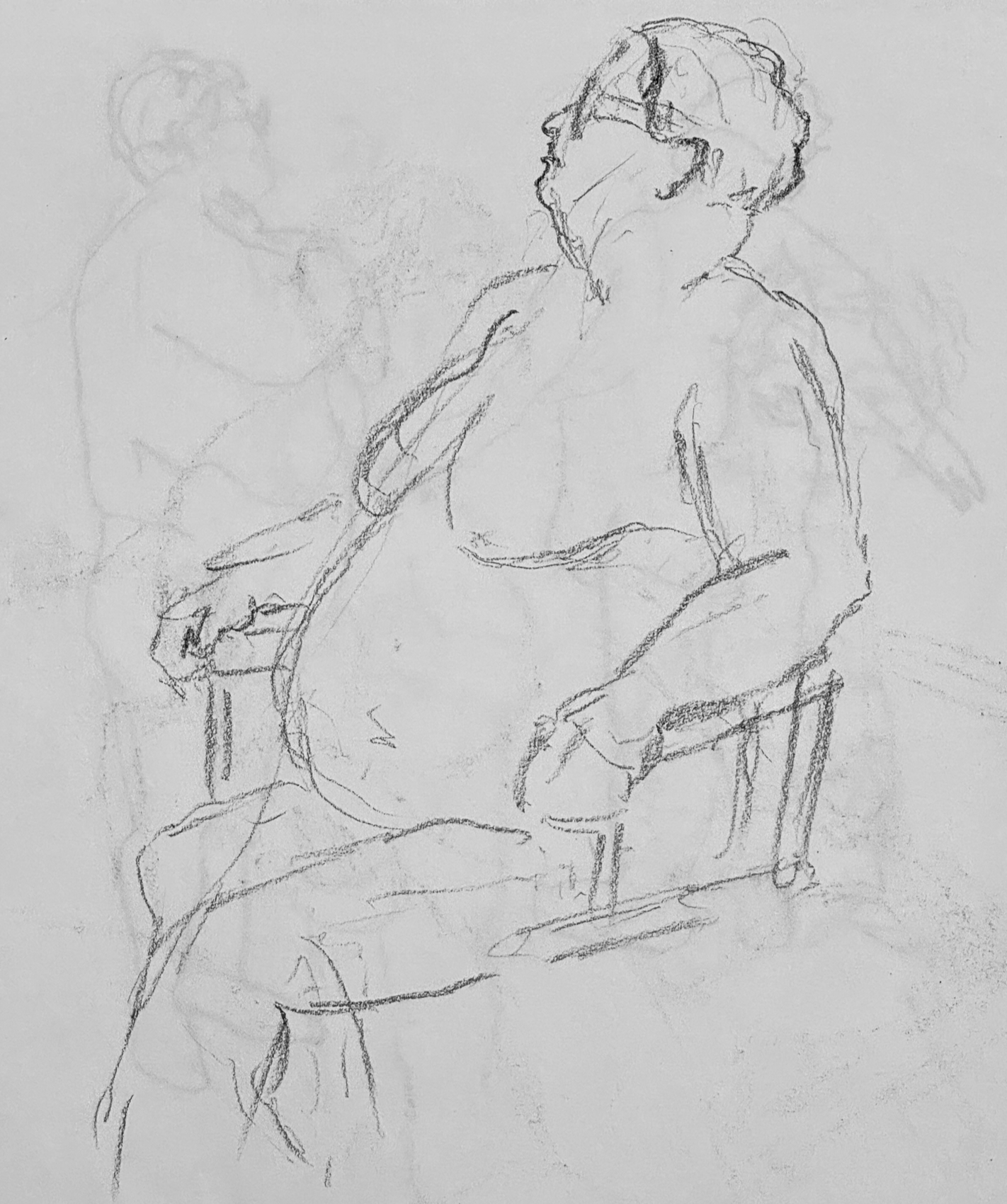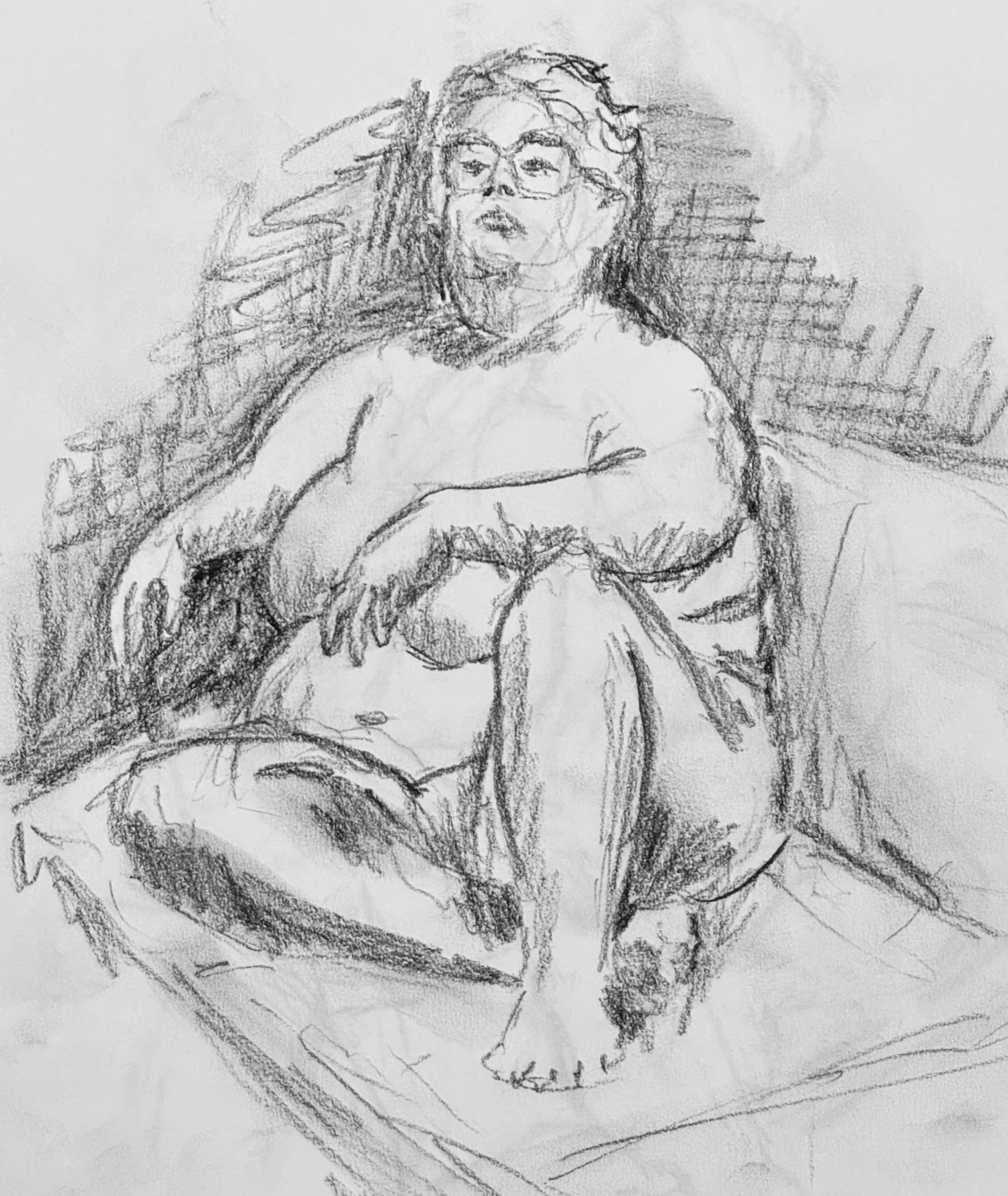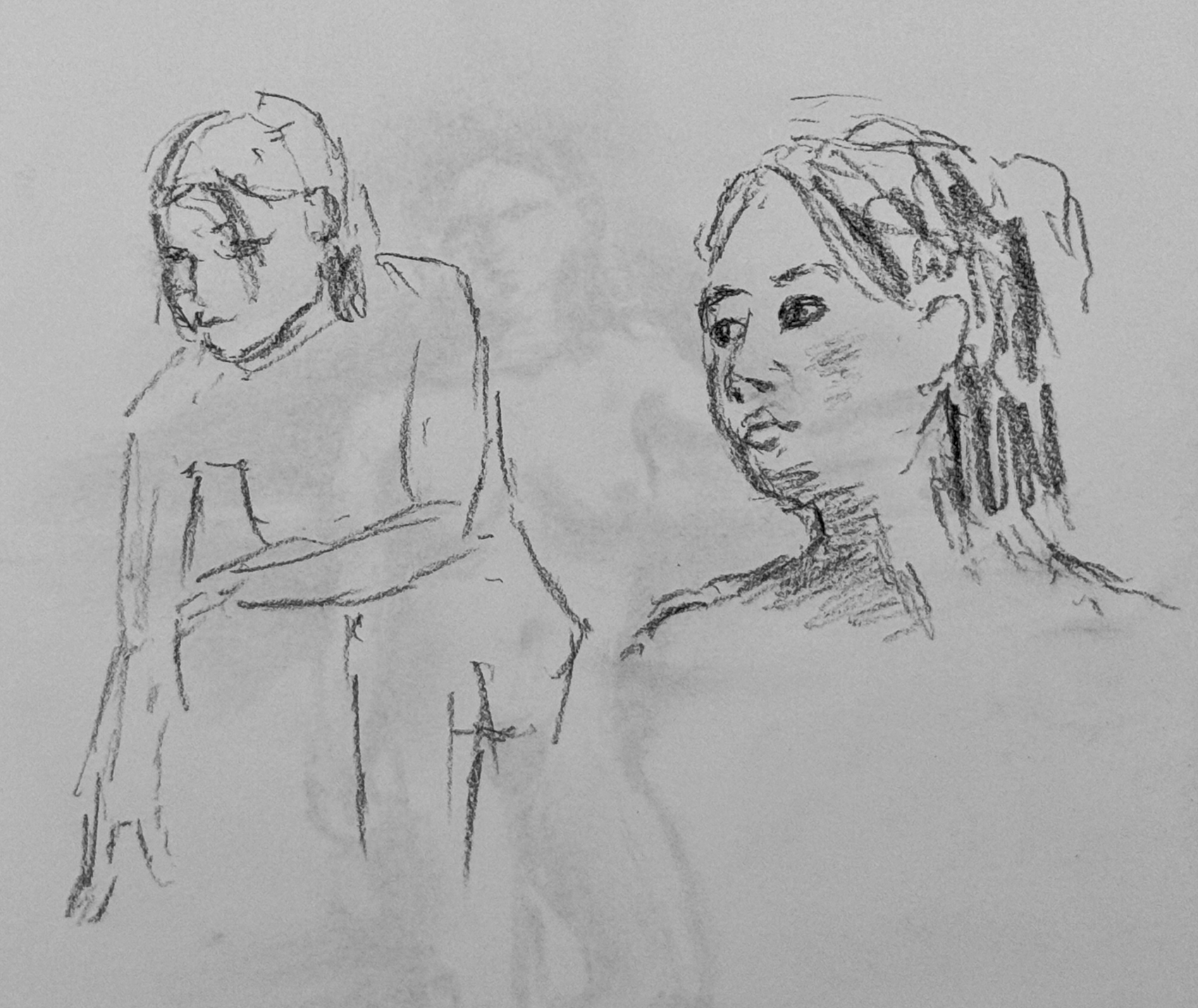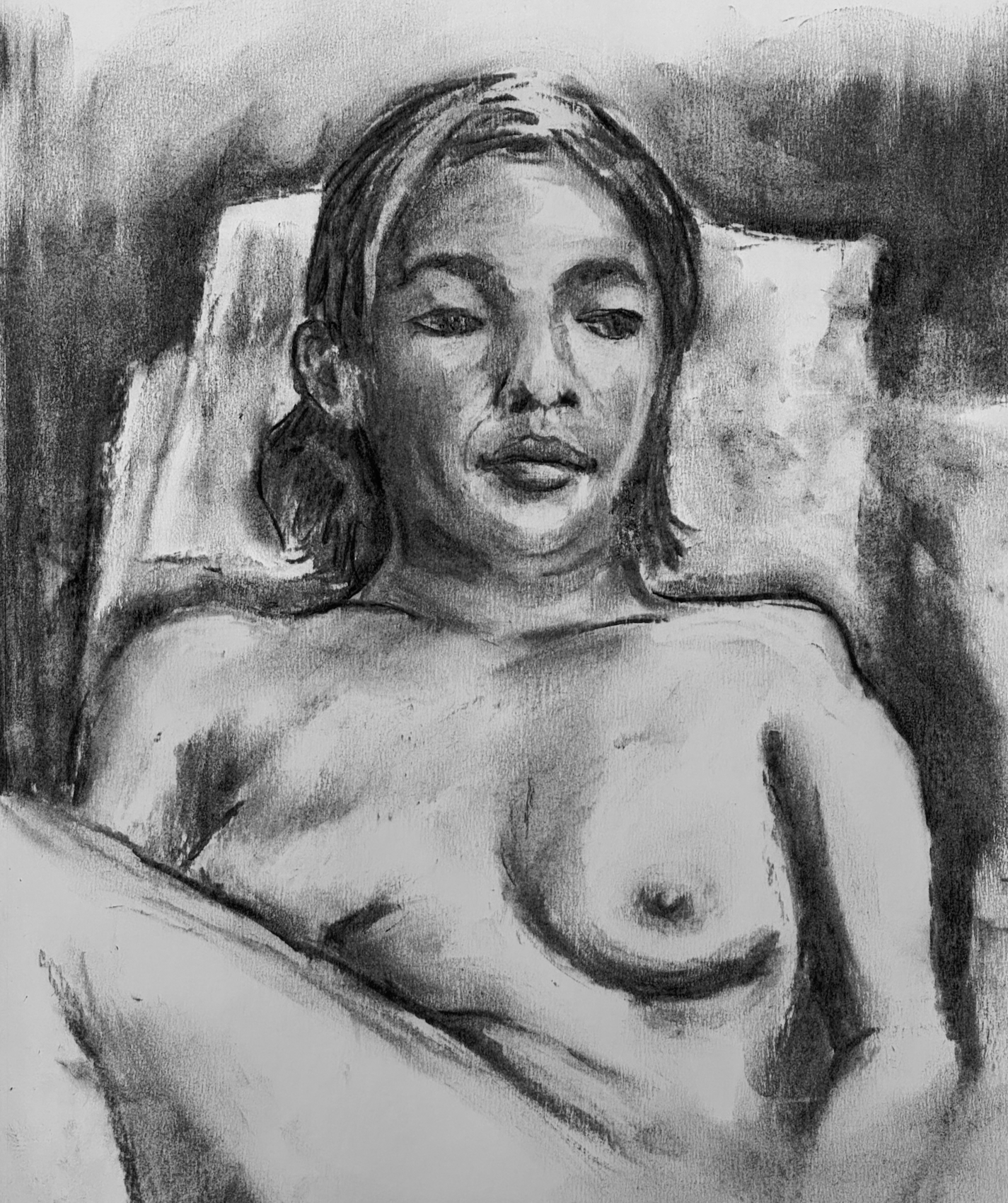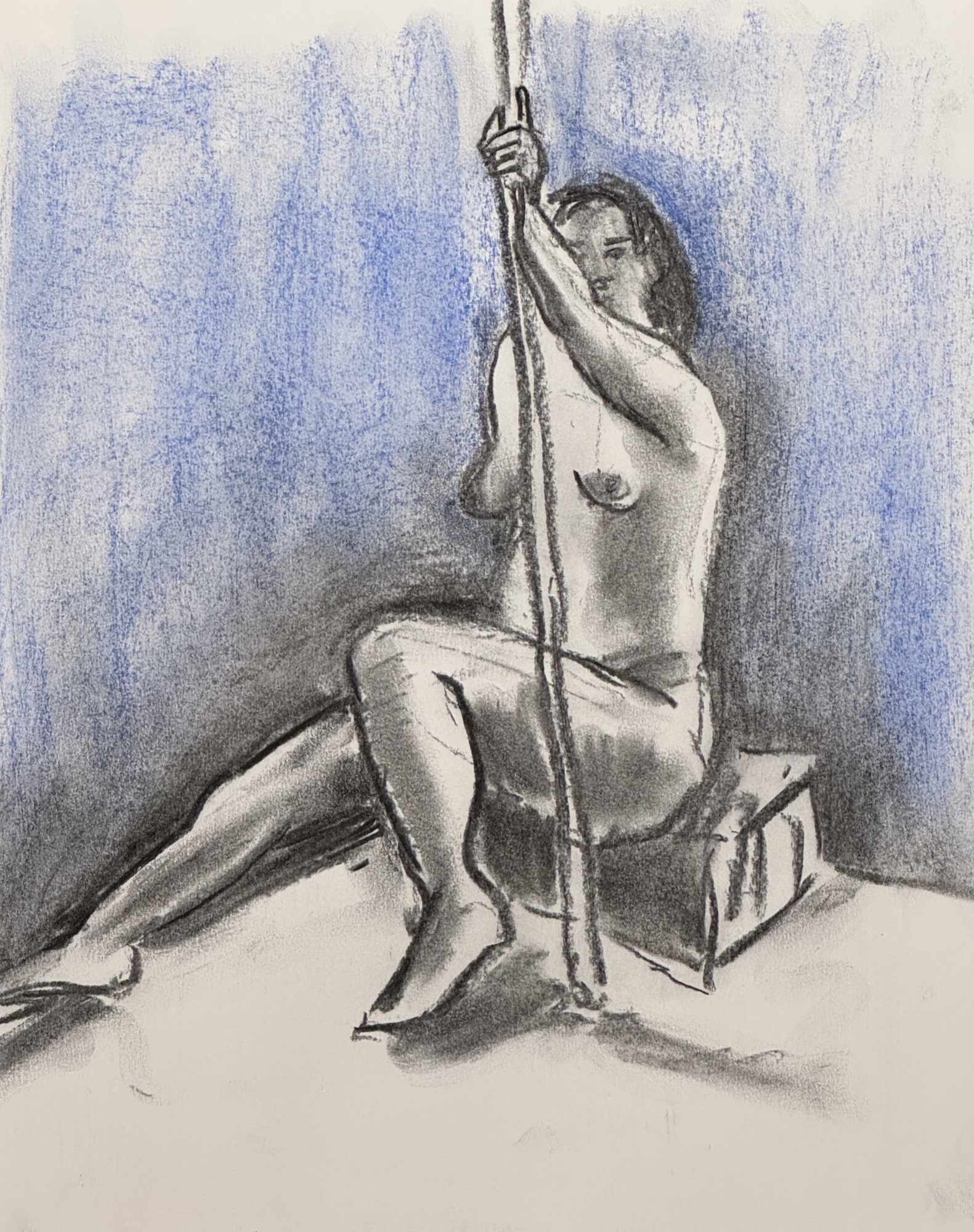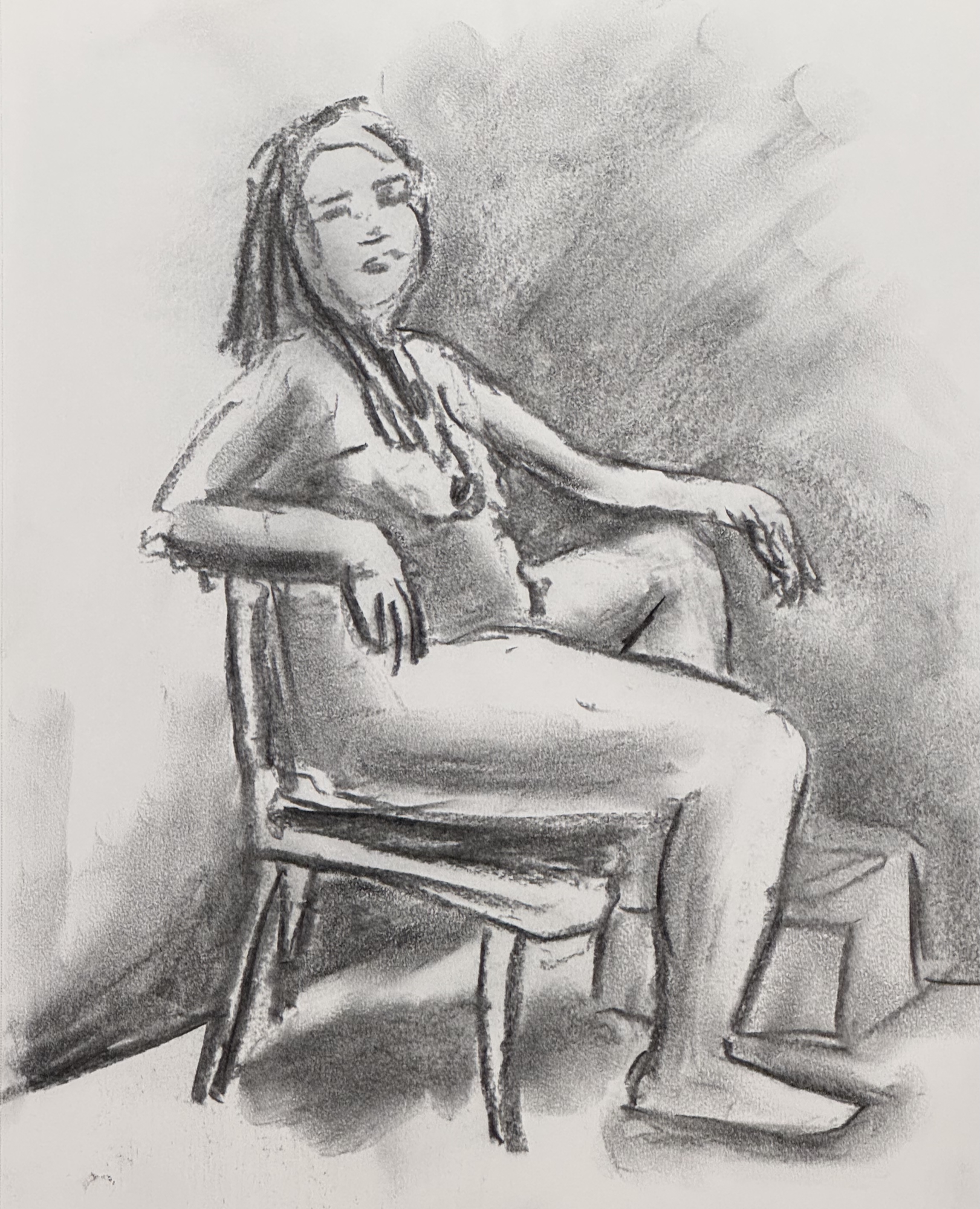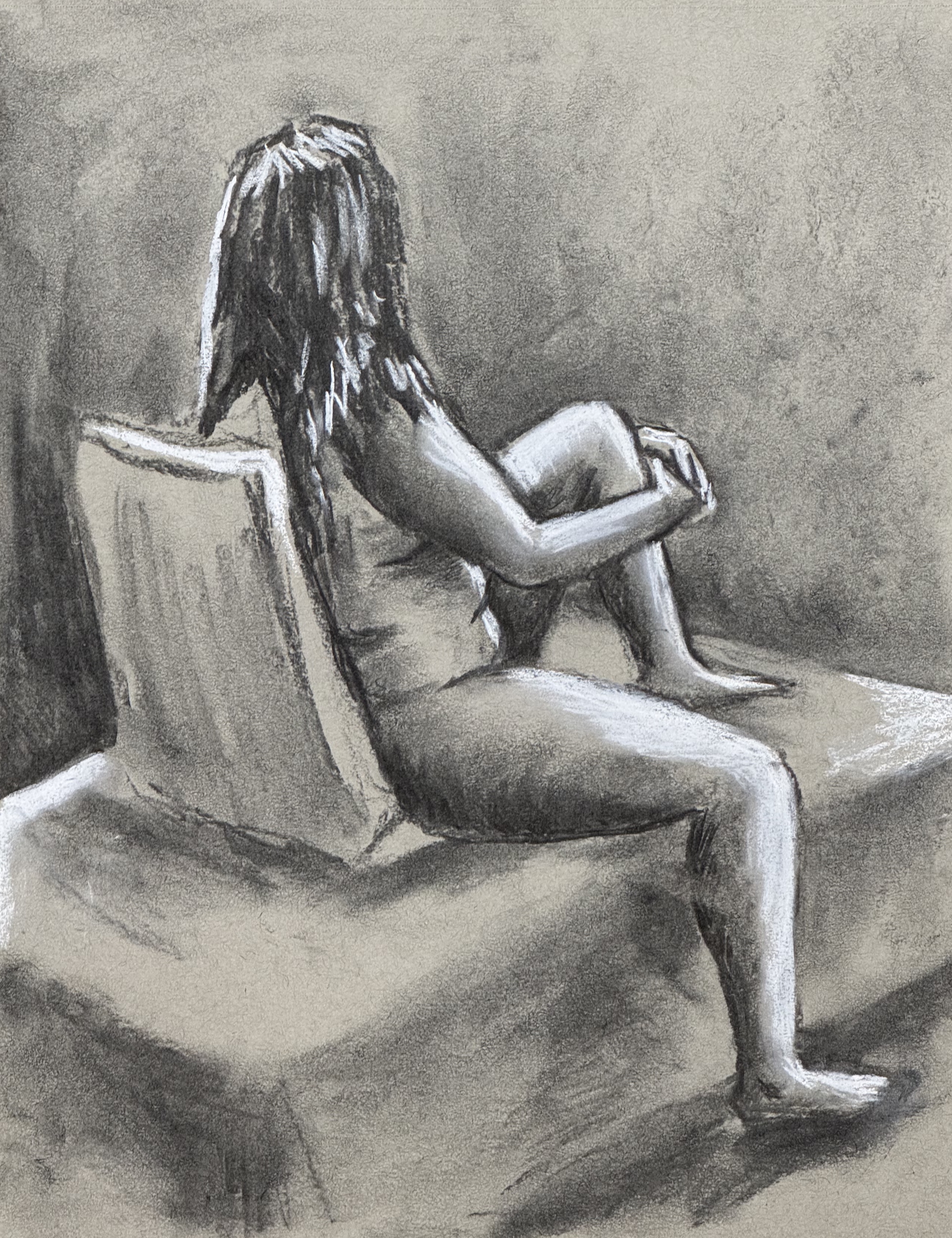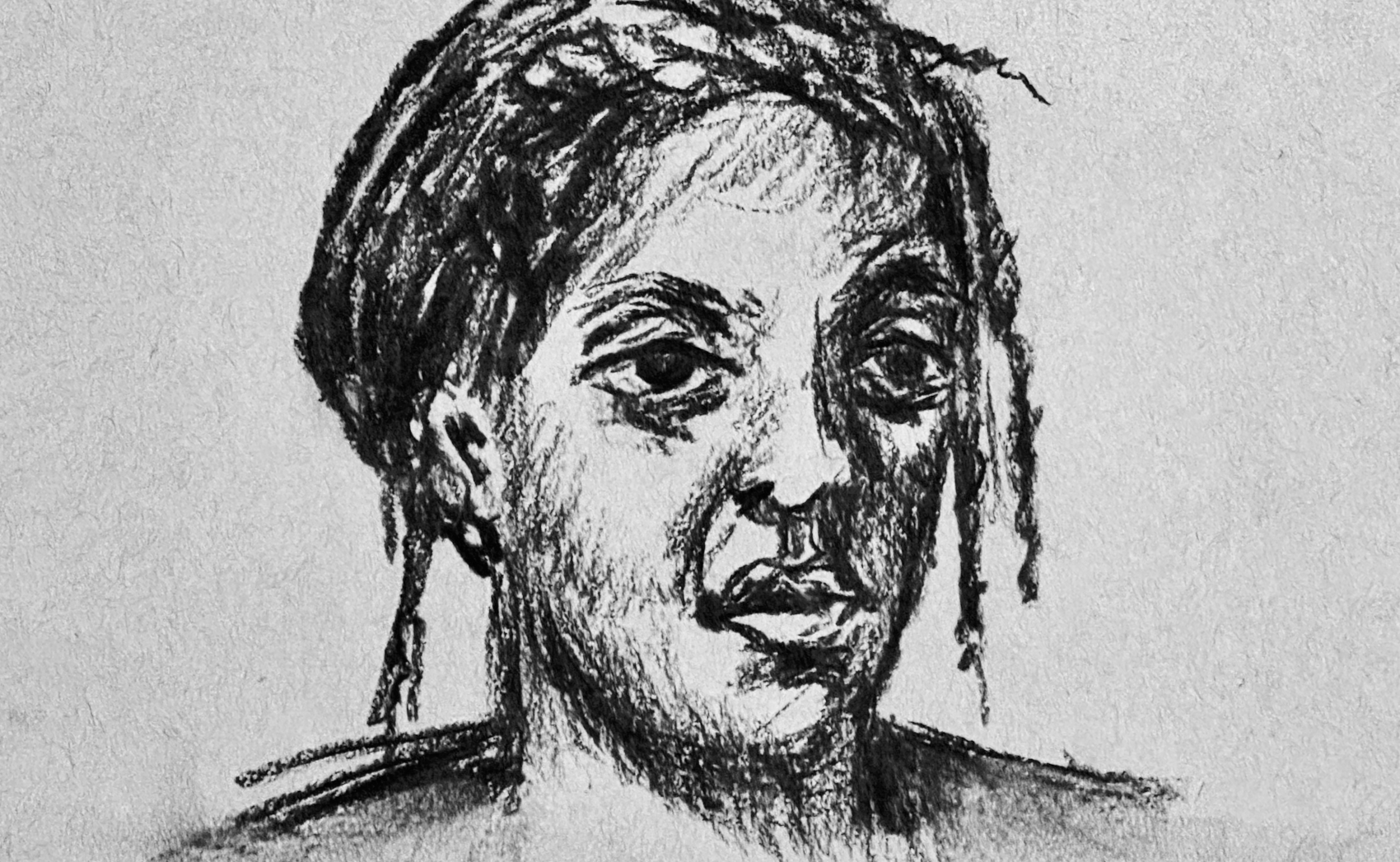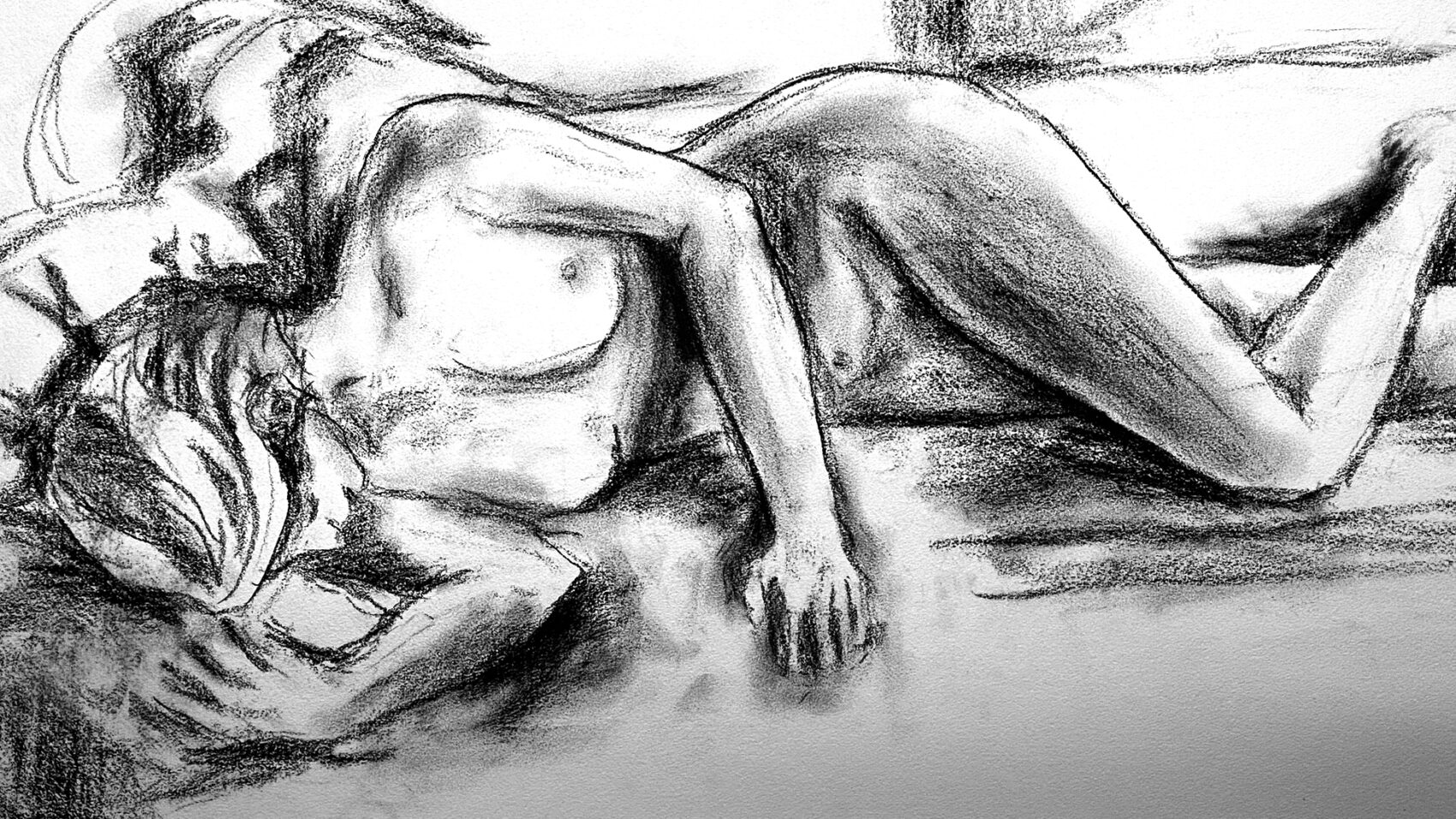For thousands of years, artists have made art inspired by the nude human figure. The tradition of drawing from life teaches artists to understand anatomy, to recognize and respect our shared humanity, and to depict what we see. But it’s a curious practice.
Nakedness is normal and natural. It’s how we enter this world, and it’s how we spend many private moments. It is one thing that we all have in common. But we live in a society where being clothed in public is the norm, and where all too often the human body is stigmatized, sexualized, politicized, and exploited for capitalistic ends. This leads many of us to have some degree of self-consciousness about our bodies. Artists and models are brave explorers who challenge society’s flawed programming and create a safe space in which to support body-positivity, and study human form and spirit.
Many people inexperienced in figure drawing mistakenly conflate artistic nudity with sexual intent. Certainly sexuality is one part of a person’s total being, but it’s not what figure drawing is about. On the other end of the spectrum, I’ve heard life drawing sessions described as “clinical.” That concept doesn’t resonate with me either, because drawing sessions usually offer a degree of collegiality, and often they’re even fun. Some environments (such as classrooms at a college) have an academic vibe, and might even impose a sort of “fourth wall” between artists and models. But other groups play music, serve snacks, and converse amongst themselves. Ultimately figure drawing is a consensual professional arrangement: artists and models gathering to exercise their respective skills, and collaborating to make good art.
Admittedly, the first time one joins a handful of other artists to draw a live model, the experience can seem momentarily awkward. But society’s inhibitions are quickly and politely escorted out of the building, and the drawing session becomes an act of trust and compassion between artist and model. It’s a judgment-free zone. We sit with Beginner’s Mind, and we move through the serious work of studying human form and rendering what we see.
Models work hard, and provide a valuable service to artists. One friend who models speaks of the experience as an empowering form of personal development. Many people who model seem to enjoy being the art, and seeing how different artists depict them. Most models seem comfortable in their own skin, and seem unfazed by their bodily exposure in the context of the art studio or classroom. If you think about it, shouldn’t we all be allowed to feel confident, safe, seen, accepted, and empowered to fully own our place in the natural world—and to allow others the same? Kudos to people who model, for embodying these traits.
Artists also provide a valuable service to each other. At the end of many drawing sessions, artists share their work with others in the group, and everyone learns from each other’s unique styles, techniques, and perspectives. All things considered, the figure drawing practice continues to be as relevant today as it was to artists of antiquity.
Below is a sampling of drawings I’ve made over the years while attending various drawing sessions around the Pioneer Valley. (Amherst College, Go Figure Drawing Studio in Holyoke, Mass., and Liliacland in Pelham, Mass.) I enjoy working in the medium of vine charcoal on heavyweight paper. Soft charcoal is smudgy and painterly, and offers more variable line weight than is possible with graphite pencils and other dry mediums. Charcoal is also relatively easy to erase—useful for correcting misplaced lines, and for carving highlights out of shaded areas.
The degree of resolution of a drawing roughly corresponds to the length of the model’s pose. One- and two-minute poses result in mere suggestions of form and gesture. Fifteen-minute poses (and longer) are more fully realized, and allow for greater exploration of light, shadow, volume, and texture.
Click or tap on a thumbnail image below to enlarge it. Advance through the slides by using your keyboard’s left and right arrow keys (or swipe left or right on a touchscreen device). To exit the slideshow, click or tap the “x” icon in the upper right corner of a slide (or press your keyboard’s “esc” key).
